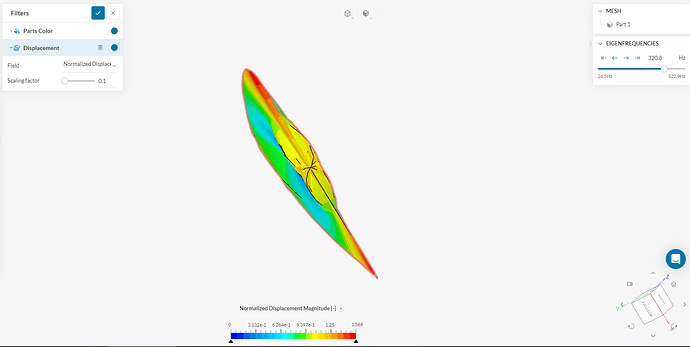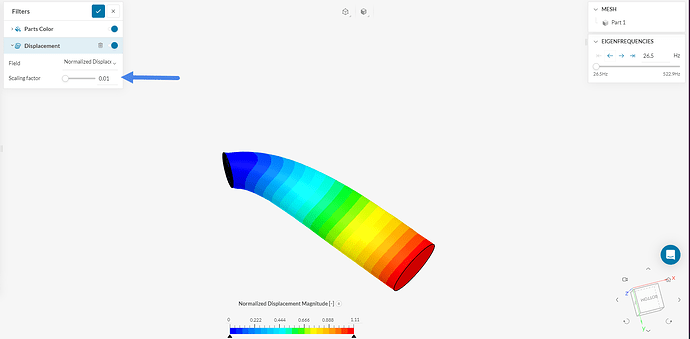As I transition to SimScale, I am attempting to solve a problem for which I know the solution to see if I can recapitulate the result with the new (to me) software.
I am modeling a small linear-elastic cylinder made out of a custom material (Young’s modulus 57.1 kPa, density 1000 kg/m^3, and Poisson’s ration 0.495). I am trying to determine its eigenfrequencies so that I can match them with the known theoretical modes of vibration.
To do this, I created a frequency analysis simulation: linked here
The problem is that when I turn on the “displacement” filter in the solution field, I get totally nonsensical-looking results. An example is shown below. Cylinders like these have many interesting types of eigenmodes (axial compression, longitudinal bending, etc, etc,) and I would like to be able to see which frequency corresponds to which of these modes. This does not appear to be a real mode! How do I fix this issue? Is this a problem with my mesh/how I posed the problem, or am I simply not post-processing the results correctly?
Thank you!
Ben


